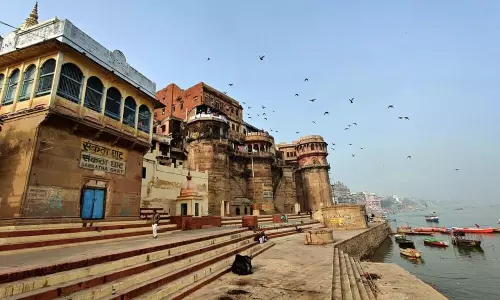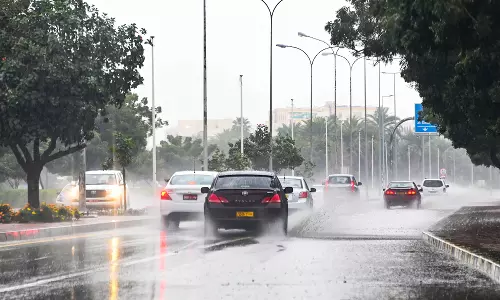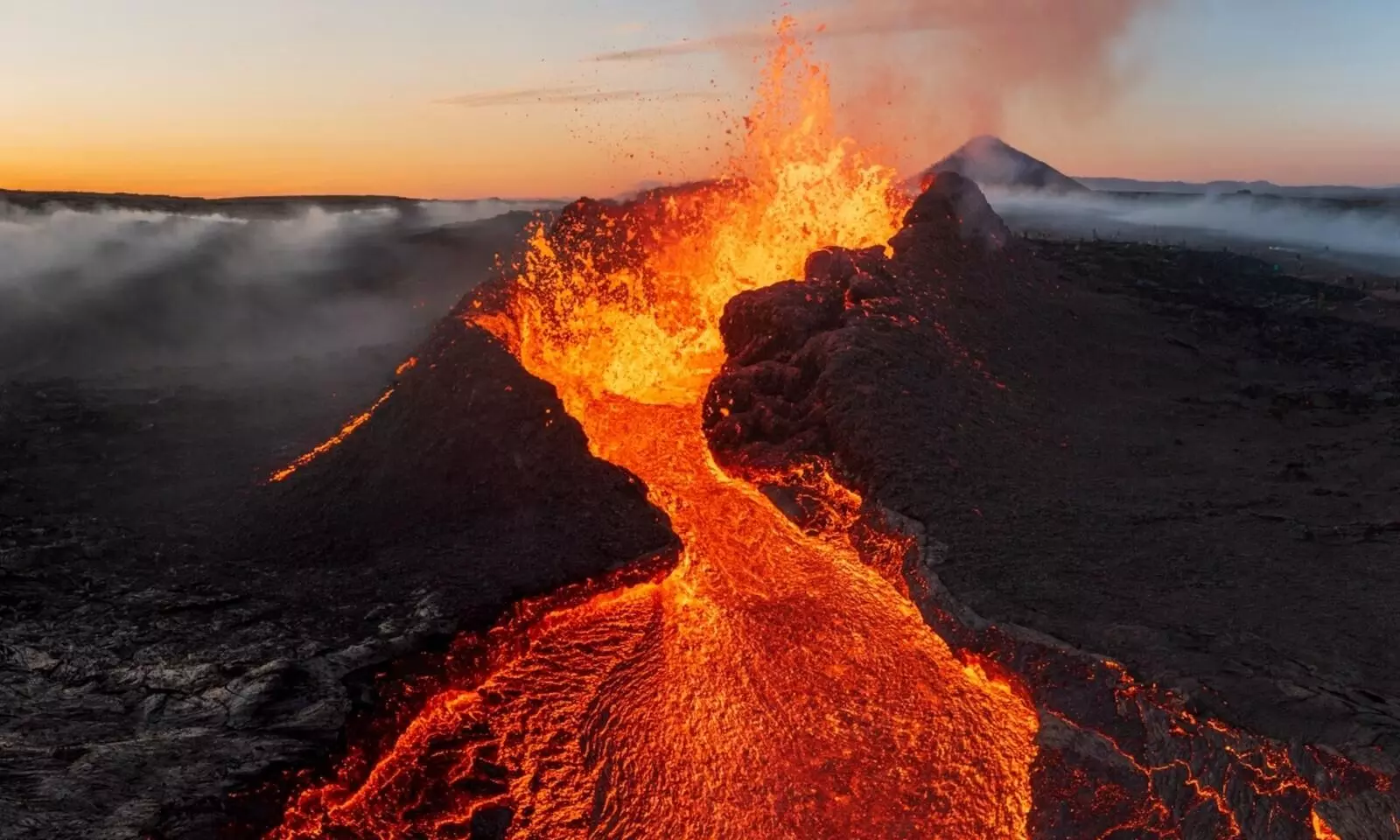
All you need to know about Iceland’s Fagradalsfjall volcano eruption
text_fieldsImage courtesy: National Geographic
A volcano in Iceland erupted and expelled lava into the sky overnight near a power plant on Monday at around 10:17 pm (2217 GMT) after a "swarm" of small tremors, the Icelandic Meteorological Office (IMO) said.
It started at about 10:20 pm local time on Monday north of Grindavik, a fishing town of 3,400 people on the Reykjanes Peninsula. The town is about 50 kilometres (30 miles) southwest of Iceland's capital, Reykjavik, in an area known broadly as Fagradalsfjall volcano.
Initially, there was a series of small earthquakes. Soon, lava that's around 1,200 C (nearly 2,200 F) began pouring out of a fissure measuring about four kilometres (2½ miles) in length.
Live-streamed footage of the eruption showed glowing orange jets of lava erupting from a gash in the ground, surrounded by billowing clouds of red smoke against the dark winter sky.
The IMO estimated that hundreds of cubic metres of lava per second flowed out in the first two hours of the eruption, though the activity had significantly subsided by Tuesday afternoon.
 Also Read - NASA captures X8-class flare hits earth, disrupting radio communications
Also Read - NASA captures X8-class flare hits earth, disrupting radio communications
The scientists had expected the eruption for several weeks and in November, authorities evacuated Grindavik after thousands of small earthquakes shook the area for more than two weeks.
Scientists said their monitors showed that a corridor of magma, or semi-molten rock, was spreading toward the town and could reach the surface imminently.
The nearby Blue Lagoon geothermal resort, one of Iceland's best-known tourist attractions, had to close temporarily as a precaution after a magnitude 4.8 earthquake hit the area last month.
None of the recent eruptions on the Reykjanes Peninsula caused damage or disruptions to flights, despite the area's proximity to the country's main Keflavik Airport.
Volcanic eruptions are not uncommon in Iceland, which is home to 33 active volcano systems, the highest number in Europe.
Fagradalsfjall had been dormant for around 6,000 years, but it flared to life in March 2021, when hundreds of people flocked to the Reykjanes Peninsula to see spectacular lava flows that lasted for months.
The red glow from the lava could be seen from the outskirts of the capital. Since then, eruptions have struck in 2021, 2022 and earlier this year, all in remote, uninhabited areas.
























